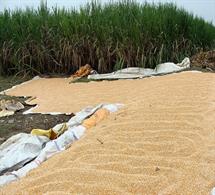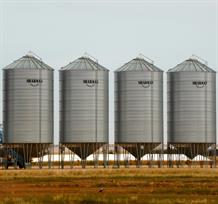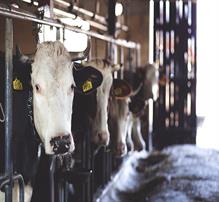
PUMPA - SMART LEARNING
எங்கள் ஆசிரியர்களுடன் 1-ஆன்-1 ஆலோசனை நேரத்தைப் பெறுங்கள். டாப்பர் ஆவதற்கு நாங்கள் பயிற்சி அளிப்போம்
Book Free DemoStorage of the harvested grains is an important task in agriculture.
The harvested grains may some times need to be kept for a longer duration of time. In such cases, we must protect the food grains from moisture, insects, rats and microorganisms.
Drying:
Freshly harvested grains (seeds) have more moisture. So they need to be stored after drying in the sunlight, if not they may get spoilt or attacked by microorganisms like fungi, making them unfit for use or germination. Drying prevents the attack by insect pests, bacteria and fungi.
Freshly harvested grains (seeds) have more moisture. So they need to be stored after drying in the sunlight, if not they may get spoilt or attacked by microorganisms like fungi, making them unfit for use or germination. Drying prevents the attack by insect pests, bacteria and fungi.

Packing for storage:
Before packing the grains to store, they need a treatment of preservation.
Dried neem leaves are used as a preservative for storing food grains at home. A specific chemical treatment with preservatives performed while storing a large quantity of grains in godowns, to protect it from pests and microorganisms; after this treatment, farmers use jute bags or metallic bins to store grains.
Before packing the grains to store, they need a treatment of preservation.
Dried neem leaves are used as a preservative for storing food grains at home. A specific chemical treatment with preservatives performed while storing a large quantity of grains in godowns, to protect it from pests and microorganisms; after this treatment, farmers use jute bags or metallic bins to store grains.
A large scale storage of grains is done in silos and granaries to protect them from pests like rats and insects.
Silos

Animal husbandry:
Similarly, in animal husbandry, animals reared on a large scale; for instance, cows and buffalos for milk and milk products. These animals need to be fed, sheltered and taken care properly.

Reference:
Image credit:
Silo Image by marcson from Pixabay - https://pixabay.com/photos/silo-wheat-storage-wheat-storage-521761/
Drying image by Creative Commons Zero - CC0, DMCA -free image- https://www.needpix.com/photo/124688/maize-corn-harvested-grains-drying-sundrying-karnataka
Farm house image: from pickpik.com, free image - https://www.pickpik.com/cattle-cow-cowshed-farm-white-house-98544